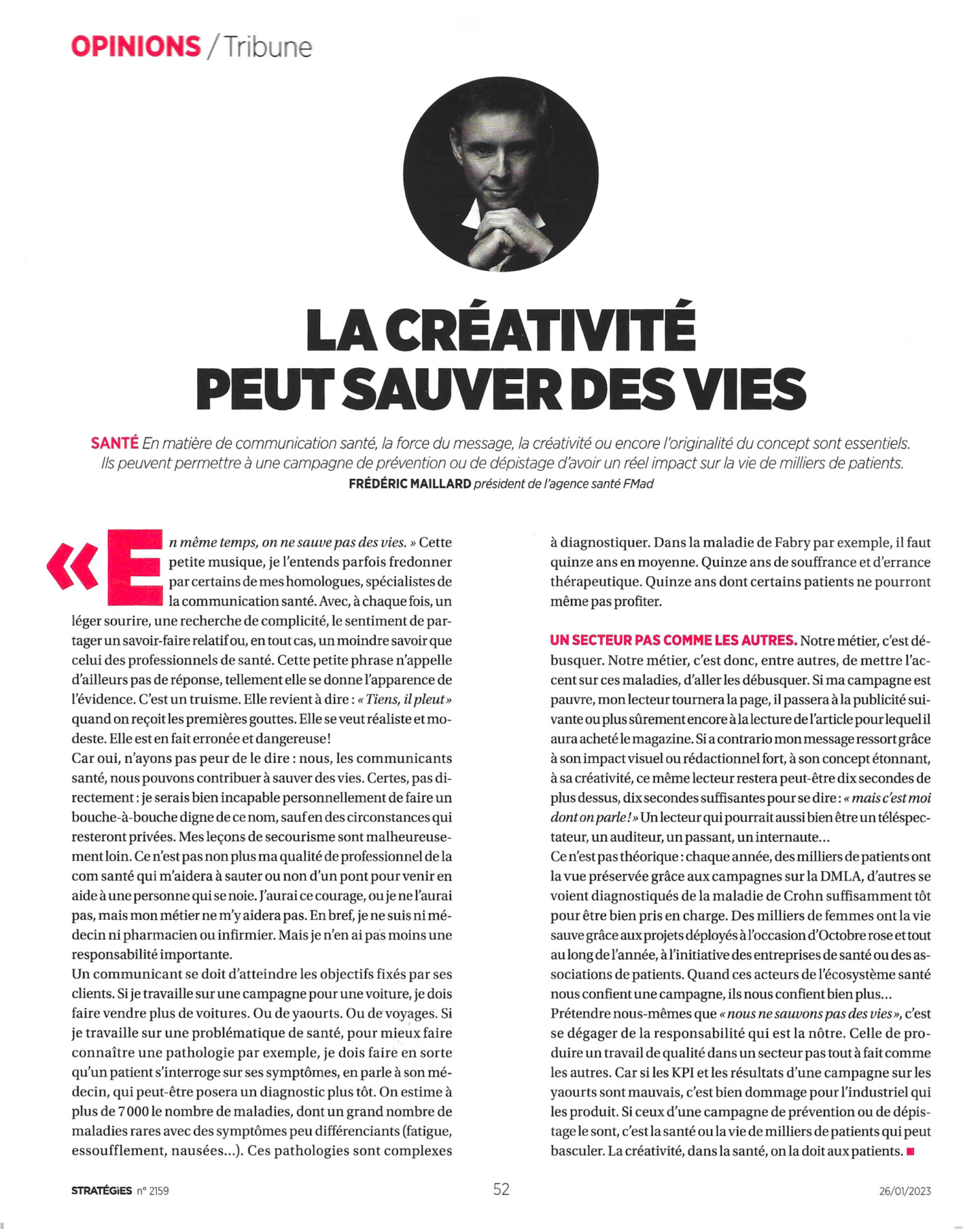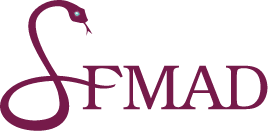
HEALTH In health communication, a powerful message, creativity and the originality of the concept are essential.
They can ensure that a prevention or screening campaign has a real impact on the lives of thousands of patients.
FREDERIC MAILLARD President of the FMad health agency
‘In any case, we don’t save lives.’ I sometimes hear this message from some of my opposite numbers who are specialists in health communication. Every time, they say it with a little smile, an attempt at complicity, the feeling of sharing a relative know-how, or, in any case, a lesser knowledge than that of healthcare professionals. This little sentence doesn’t call for an answer, as it seems totally obvious. It’s a truism. It amounts to saying: ‘Look, it’s raining’ when the first drops fall. It claims to be realistic and modest. In fact, it is erroneous and dangerous!
Let us not be afraid to say: we, who are health communicators, can contribute to saving lives. Admittedly, not directly: I would personally be unable to do a correct mouth-to-mouth resuscitation, except in private circumstances. The first aid lessons I took were unfortunately long ago. Nor is it my quality as a health communication professional that will help me to jump off a bridge or not to assist a person who is drowning. I will be brave enough or I won’t, but my profession won’t help me. I am neither a doctor nor a pharmacist nor a nurse. But I still have a great responsibility.
Communicators must reach the goals that are fixed by their customers. If I am working on a campaign for a car, I need to ensure that more cars are sold. Or yogurts. Or travel. If I am working on a health issue, for example to ensure that a pathology is better known, I must make sure that patients ask questions about their symptoms and that they talk about them to their doctors, who perhaps will establish a diagnosis earlier. The number of diseases is estimated at more than 7,000, including a large number of rare diseases with symptoms that do not differ much (fatigue, shortness of breath, nausea, etc.). These pathologies are complex
to diagnose. For example, on average it takes fifteen years to diagnose Fabry disease. Fifteen years of suffering and search for treatment. Fifteen years that some patients will not even be able to benefit from.
A SECTOR UNLIKE ANY OTHER. Our profession is all about finding things out. One of the goals of our profession is therefore to focus on these diseases and go and find out all about them. If my campaign is poor, my reader will turn the page and go on to the next ad, or, more likely, read the article that he or she bought the magazine for. If, however, my message stands out due to its strong visual or editorial impact, its surprising concept or its creativity, the same reader will perhaps spend ten seconds more reading it, ten seconds which are enough for him or her to say, ‘but it’s me they’re talking about!’ This reader could also be a TV viewer, a radio listener, a passerby or an internet user.
It isn’t theoretical: every year, thousands of patients have their eyesight preserved thanks to campaigns about AMD, while others get sufficiently early diagnoses of Crohn’s disease so that they can be well treated. The lives of thousands of women are saved thanks to projects rolled out during Pink October and all year round, on the initiative of healthcare companies or of patient associations. When these stakeholders of the health ecosystem entrust us with a campaign, they entrust us with much more…
Claiming that ‘we don’t save lives’ means evading our responsibility, that of producing high-quality work in a sector that is not quite like any other. If the KPIs and results of a campaign about yoghurts are bad, it is a real problem for the company that manufactures them. If the KPIs and results of a prevention or screening campaign are bad, it’s the health and lives of thousands of patients that can be affected. In health, creativity is a duty to patients.
